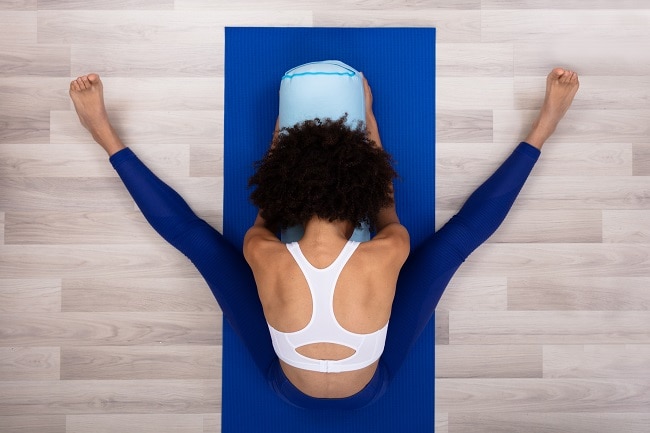Heated yoga feels great against winter’s chill, but it’s awful come summertime. Of course, you can just do your asana without a furnace going. But why compromise?
Instead, capitalize on a type of yoga that’s meant to be practiced in refreshing temps: Yin yoga, a tissue-specific exercise that focuses on ligaments, tendons, endomysial fascia and joint capsules.
“Generally, we want the muscles relatively cool so that when we come into a pose the muscles won’t absorb the range of motion, allowing us to bring the emphasis of the pose more to the dense connective tissues in and around the joints,” says Josh Summers, founder of the Summers School of Yin Yoga, who leads Yin yoga teacher trainings and retreats internationally.
Ideal temps vary from person to person. “I recommend people practice at a temperature that is comfortable for them,” Summers says. “For most, that seems to be the mid-70s.” Aim to feel comfortable, not sweaty or cold.
Here are 4 reasons to practice Yin yoga this summer:
1. You’ll be more physically fit and balanced.
Yin yoga often complements active (or yang, in Traditional Chinese Medicine; yin means passive) practices; your body needs both to stay healthy. So maybe during the calendar’s steamy months your cardio and muscle-building habit can be swimming. Sounds a lot nicer than a stifling yoga room filled with panting vinyasa, or flow, practitioners. And then you do Yin for your yoga fix.
2. Your ligaments, tendons, endomysial fascia and joint capsules will get nourished.
“All tissues in our body require positive stress, or eustress, in order to maintain their health,” Summers says. “Too little stress and tissues atrophy. Too much stress and tissues degenerate.” Yin poses are often held for 4 to 6 minutes. Beginners may want to hold for less time, and more seasoned practitioners may wish to extend holds to 10 to 20 minutes depending on their tissues’ tolerance. “In Yin yoga, we come to a mild edge of modest stress and, with the muscles relaxed, we allow these tissues to marinate in the eustress for positive physiological response,” Summers says.
3. Your body will release deep tension.
Ever wonder why an asana meant to target your hips releases the knot in your neck? It’s because of yoga’s unique ability to target your fascia, the intricate webbing that’s woven around and throughout your insides, including your muscles. Over time, your fascia can become tight and dry from, for example, inactivity or muscle imbalances. Then your body feels tight, and your range of motion often decreases.
Research, in part from Dr. Helene Langevin, suggests that gently loading the fascial tissues that Yin yoga targets, for relatively long durations, is a safe and effective way to restore health and optimal functionality to these tissues. Yin yoga alleviates tension and contracture in your fascia, and it promotes hydration and the release of inflammation in your fascia, Summers notes.
4. You’ll feel more mentally and emotionally balanced.
If you’re always on high alert and hustling to get things done, Yin yoga is a perfect antidote. You need both active and passive components to stay physically—and mentally—healthy. Yin yoga tones your parasympathetic (“rest and digest”) nervous system, letting you relax and renew.
Being somewhat still in Yin yoga postures for several minutes at a time also forces you to observe what’s going on in your body (sensations) and mind (thoughts). You become more receptive. Initially, this might cause you angst, especially if you’re usually on overdrive in order to avoid what’s happening in your head. But over time, you’ll get to know yourself better, and, perhaps from this reintroduction, find ways to address why you speed through life or stuff your agenda with activities.
If you’re the type who takes things at a snail’s pace, you can still benefit from Yin yoga’s signature stillness by being introspective or moving into meditation.
Mitra Malek’s reporting and writing have appeared in The Washington Post and USA Today, and she is a contributing editor for Yoga Journal. Connect at mitramalek.com.

